
The Core Technologies
Page 6
|
  |
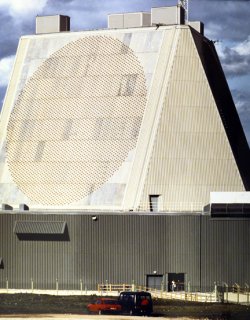 |
Early Warning
Radar
“Early warning” radar surveillance
stations (built by Raytheon under the program names PAVE and BMEWS) in
Alaska, Greenland, Great Britain, California and Massachusetts will be
upgraded by Raytheon for NMD. These ultra-high-frequency phased-array
radars will receive initial tracking data from DSP (or SBIRS), then lock
onto the missile and help project its “flight envelope” and optimum "intercept
points." |
.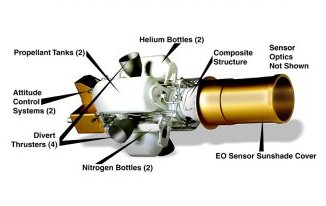
Exoatmospheric Kill Vehicle
(EKV)
Perhaps the most advanced
NMD technology is the Raytheon-built EKV. (Exoatmospheric means “outside
the atmosphere”). The EKV receives tracking and targeting data from the
X-Band Radars. After separating from the booster in space, the EKV is designed
to maneuver towards the incoming warhead, scan to distinguish warheads
from decoys and debris, then fire its engines and ram the selected target
at a combined “closing speed” of 15,000 miles-per-hour - destroying
the target through sheer impact. (Boeing is building a "back up" EKV.)
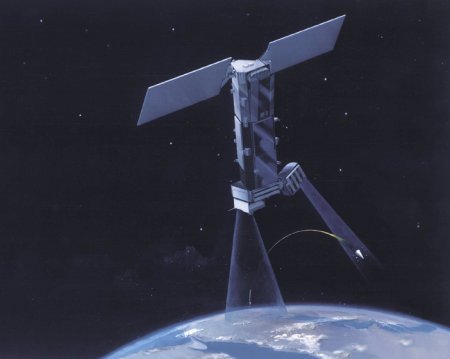
Space-Based Infra-Red
System
Since the early 1970s, the
U.S. has relied on Defense Support Program Early Warning Satellites (DSP)
for “first alert” warnings of launches and nuclear blasts. DSP satellites
are equipped with super-sensitive Infrared arrays, nuclear explosion detectors
and particle detection monitors. Built by TRW, a current-generation DSP
satellite costs roughly $180 million, weighs 5,000 pounds and measures
33 feet long and 14 feet in diameter. DSP satellites will be replaced around
2007 by two new satellite networks: the Space-Based Infrared System (SBIRS
HIGH, and SBIRS LOW).
SBIRS HIGH will consist of
six Lockheed Martin-built satellites (five operational and one back-up)
in geostationary orbits. Raytheon and TRW are competing to build SBIRS
LOW: 24 high-resolution InfraRed satellites in low earth orbit, designed
to provide enhanced launch detection and warhead-discrimination capabilities.
Interceptor/Booster
Boeing will build the
high-speed rockets capable of flying towards an "intercept point"
at 4.5 miles-per-second. Guided into space by the UEWR and X-Band Radars,
the Interceptor/Booster will release a self-propelled weapon to seek and
destroy the incoming warhead. (Current test interceptors are built by Lockheed
Martin and the Pentagon plans to seek a second company to produce a "back
up" interceptor.) |
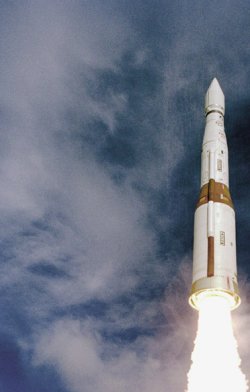 |
.
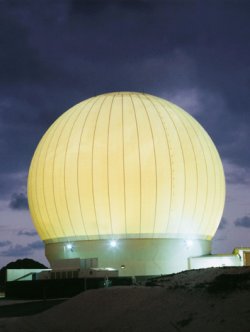 |
X-Band Radar
Shaped like an 88-foot-diameter
golf ball, an X-Band Radar site operates at 10 gigahertz - the same frequency
range as a police “speed-gun.” But these huge, high-power radars can pinpoint
an object smaller than a fifty-cent piece from 2,400 miles away. Developed
by Raytheon in the early 1990s as the classified HAVE STARE program, up
to seven X-Band radars may be constructed for NMD to pinpoint and discriminate
between warheads, decoys and space debris. |
.
Battle Management
Command,
Control and Communications
The Battle Management, Command,
Control and Communications (BM/C3) forms the nerves and brain of NMD. Up
to 12 BM/C3 stations built by TRW are designed to continually analyze and
trade data with other system elements (often thousands of miles apart).
Six times a minute, they tell the other elements precisely what to do and
when - with over-rides allowing for human control. |
. |
.
Back/Next |






